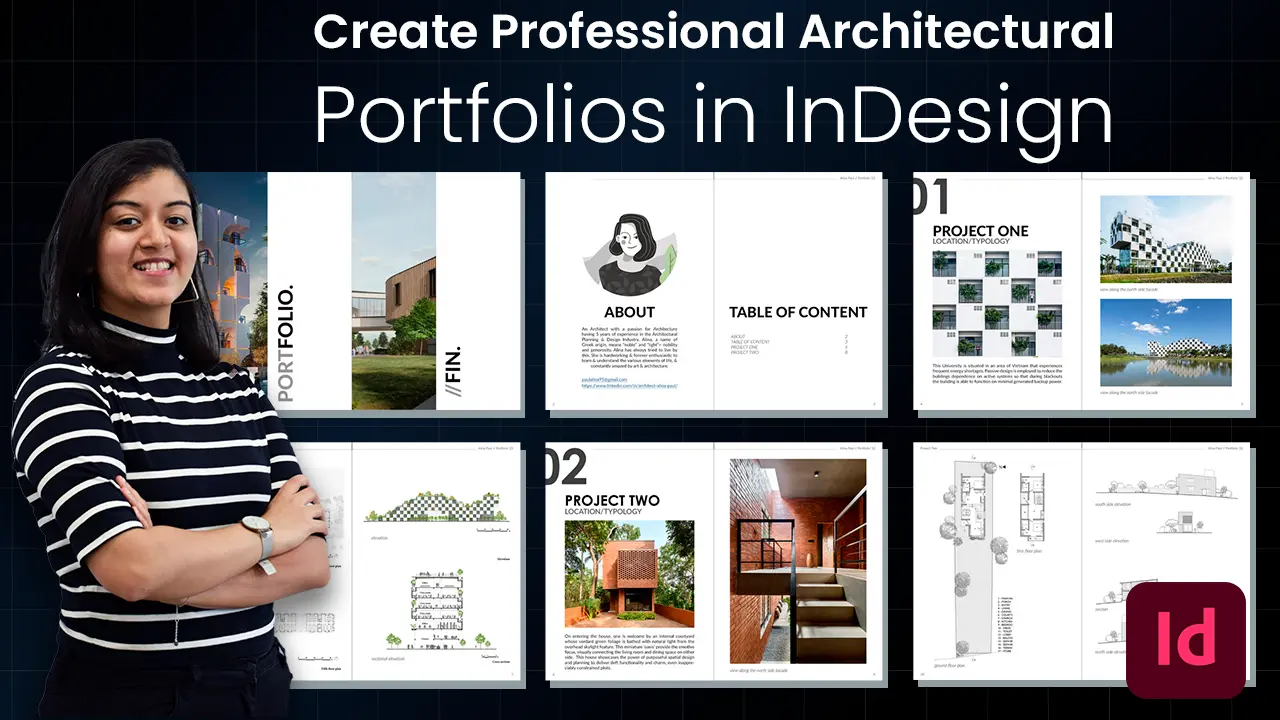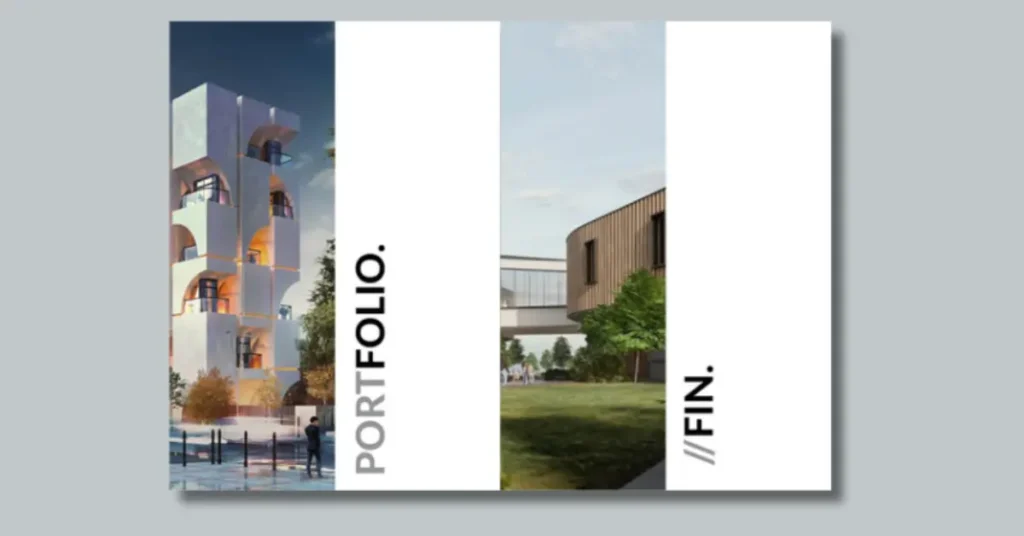Building Your Archviz Portfolio: Tips and Strategies

In the competitive realm of architectural visualization (archviz), establishing a captivating portfolio is paramount. Your portfolio serves as a visual representation of your skills, creativity, and expertise, acting as a powerful tool for attracting clients and securing projects. Whether you’re a seasoned professional or just embarking on your archviz journey, crafting a standout portfolio requires careful planning, strategic curation, and a keen understanding of industry trends. In this comprehensive guide, we’ll explore essential tips and strategies for building a compelling archviz portfolio that showcases your talent and helps you stand out in the industry.
Understanding the Importance of Your Archviz Portfolio
Before delving into the specifics of portfolio creation, it’s essential to grasp the significance of your archviz portfolio in the competitive landscape of architectural visualization. Your portfolio serves as your professional calling card, providing potential clients and employers with a glimpse into your skills, aesthetic sensibility, and creative vision. A well-curated portfolio not only showcases your past work but also demonstrates your ability to translate design concepts into compelling visual narratives. In an industry where visual communication is paramount, your portfolio acts as a primary tool for making a lasting impression and securing lucrative opportunities.
Defining Your Style and Niche
One of the first steps in building an archviz portfolio is defining your unique style and niche within the industry. Your style encompasses your aesthetic preferences, artistic sensibilities, and visual language, while your niche pertains to the specific types of projects or clients you cater to. By honing in on your style and niche, you can differentiate yourself from competitors and attract clients who resonate with your particular aesthetic and expertise.
Research Trends and Inspirations
Staying abreast of the latest trends and innovations in architectural visualization is crucial for refining your style and staying relevant in the industry. Take the time to research prominent artists, studios, and design trends, drawing inspiration from a diverse range of sources. Experiment with different techniques, software tools, and rendering technologies to develop a signature style that sets you apart from the competition.
Identify Your Target Audience
Understanding the preferences and needs of your target audience is essential for tailoring your portfolio to resonate with potential clients. Consider the demographics, industries, and project types that align with your expertise and interests. Whether you specialize in residential, commercial, or industrial visualization, tailor your portfolio to showcase projects that appeal to your ideal clientele.
Curating Your Best Work
With a clear understanding of your style and niche, it’s time to curate a selection of your best work to include in your portfolio. Quality should always take precedence over quantity, so be selective in choosing projects that highlight your skills, creativity, and attention to detail. Aim to create a diverse portfolio that showcases your versatility and range as a visualizer, encompassing various project types, styles, and design aesthetics.
Highlight Key Projects
Choose a handful of projects that exemplify your best work and showcase your capabilities as an archviz artist. Select projects that demonstrate your proficiency in key areas such as lighting, composition, materiality, and realism. Include high-resolution images, renderings, and detailed descriptions to provide context for each project and highlight your contributions to the design process.
Demonstrate Technical Proficiency
In addition to showcasing your finished projects, consider including supplementary materials that demonstrate your technical proficiency and expertise. This could include wireframes, render passes, post-production breakdowns, and 3D models that offer insights into your creative process and attention to detail. Providing a behind-the-scenes look at your workflow and techniques can enhance your credibility as a skilled visualizer and differentiate your portfolio from others.
Telling Your Story
Beyond showcasing your visual work, your portfolio provides an opportunity to tell your story as an archviz artist and connect with potential clients on a deeper level. Use your portfolio to convey your passion for architecture and design, articulate your creative vision, and highlight the unique value you bring to each project. By weaving a compelling narrative throughout your portfolio, you can engage viewers and leave a lasting impression that sets you apart from the competition.
Craft a Compelling Narrative
Introduce yourself to viewers and provide background information on your experience, education, and professional journey. Share insights into your creative process, design philosophy, and approach to visualization to give clients a glimpse into your personality and working style. Use storytelling techniques to captivate viewers and create an emotional connection that resonates with their aspirations and objectives.
Include Testimonials and Client Feedback
Incorporating testimonials and client feedback into your portfolio can further enhance your credibility and trustworthiness as an archviz artist. Feature quotes or reviews from satisfied clients that highlight the positive impact of your work and reinforce your reputation for delivering exceptional results. Testimonials serve as social proof of your skills and reliability, instilling confidence in potential clients and increasing the likelihood of securing new projects.
Showcasing Your Skills
In addition to showcasing your past projects and telling your story, your portfolio should demonstrate your skills and expertise as an archviz artist. Consider incorporating supplementary materials and interactive elements that provide a comprehensive overview of your capabilities and highlight your technical prowess.
Create Interactive Presentations
Utilize interactive presentations or virtual tours to showcase your projects from different angles and perspectives. Leverage software tools and platforms that enable viewers to explore your designs in real-time, allowing them to interact with the space and experience it firsthand. Incorporate animations, walkthroughs, and interactive elements that bring your designs to life and create a more immersive experience for viewers.
Include Before-and-After Comparisons
To demonstrate the transformative impact of your work, consider including before-and-after comparisons that highlight the improvements and enhancements made through your visualization efforts. Showcasing side-by-side comparisons of raw design concepts and final renderings can underscore your ability to enhance and elevate existing spaces, making them more visually compelling and marketable.
Staying Updated and Evolving
The field of architectural visualization is constantly evolving, with new technologies, techniques, and trends emerging regularly. As a visual artist, it’s essential to stay updated on industry developments and adapt your skills to meet evolving client demands and expectations. By investing in ongoing learning and professional development, you can position yourself as a trusted expert in the field and maintain a competitive edge in the marketplace.
Continuously Improve Your Skills
Commit to lifelong learning and professional development by staying updated on the latest tools, software, and techniques in architectural visualization. Enroll in workshops, courses, and training programs that expand your skill set and deepen your expertise in areas such as rendering, lighting, modeling, and post-production. Experiment with new software tools and technologies to broaden your creative toolkit and stay ahead of the curve in a rapidly evolving industry.
Seek Feedback and Critique
Seeking feedback and critique from peers, mentors, and industry experts is essential for honing your craft and identifying areas for improvement. Participate in online communities, forums, and critique groups where you can share your work, receive constructive feedback, and engage in meaningful dialogue with fellow visual artists. Be open to feedback and embrace constructive criticism as an opportunity for growth and learning, rather than as a reflection of your skills or worth as an artist.
Conclusion
In conclusion, building a compelling archviz portfolio requires a combination of artistic talent, technical proficiency, and strategic planning. By defining your style and niche, curating your best work, telling your story, showcasing your skills, and staying updated and evolving, you can create a portfolio that not only showcases your talent but also sets you apart in the competitive world of architectural visualization.
As you embark on your portfolio-building journey, remember to stay true to your creative vision, maintain a commitment to excellence, and continuously seek opportunities for growth and improvement. With dedication, perseverance, and a passion for your craft, you can create a portfolio that opens doors, attracts clients, and propels your career to new heights in the dynamic and ever-evolving field of architectural visualization.












